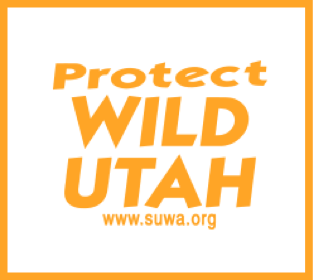|
Earthjustice * Southern Utah Wilderness Alliance * The Wilderness Society
For Immediate Release: May 21, 2008
Contacts:
Ted Zukoski, Earthjustice, 303.996-9622
Heidi McIntosh, Southern Utah Wilderness Alliance; 801.541.5833 (cell)
Kristen Brengel, The Wilderness Society, 202.429.2694
Legal Victory for Utah National Monument and Wild Lands
Federal judge holds that county violated U.S. Constitution by opening closed roads in Grand Staircase-Escalante National Monument, Glen Canyon and wild lands
SALT LAKE CITY In an unusual case, last Friday, U.S. District Judge Tena Campbell ruled that a southern Utah county violated the Supremacy Clause of the U.S. Constitution when it adopted an ordinance that encouraged off-road and other vehicles to use routes that had been closed by federal land managers in the Grand Staircase-Escalante National Monument, Glen Canyon National Recreation Area, and in a designated wilderness area. Kane County also violated the Constitution by posting dozens of route signs in the places Monument managers had closed to vehicles to protect sensitive streams, wildlife habitat, archeological treasures, and wilderness values.
Under long-standing precedent, the Supremacy Clause bars state and local governments from making laws that conflict with federal law. It is not, however, commonly used in cases attempting to stop environmental damage.
“This is a great day for the Grand Staircase-Escalante National Monument and Glen Canyon. The decision sends a strong signal to states and counties that they can’t literally run roughshod over national parks and national monuments with dirt-bikes, ATVs, and other off-road vehicles,” said Ted Zukoski from Earthjustice. “It says that when national parks and national monument adopt measures to protect streams, wildlife, wilderness, and archeological wonders, it’s trampling the United States Constitution for local governments to undermine those protections.”
Kane County argued that it could defy federal managers and the route limitations on federal land because of the arcane, repealed right-of-way law known as “R.S. 2477,” which granted rights-of-way across federal lands. But Judge Campbell ruled that the County could not force federal managers to recognize the claims without establishing them in court.
“Kane County has used R.S. 2477 to bully the Monument managers for years. Now the county has to actually ante up with real evidence of their so-called roads, which they’ve never done. With this decision, federal agencies can finally get back to the work of protecting our national heritage,” said Heidi McIntosh from Southern Utah Wilderness Alliance.
Background
In 1999, federal Bureau of Land Management (“BLM”) issued a management plan for the Monument, which determined, among many other issues, which routes in the Monument would be open to what types of motorized vehicle use. The plan left open nearly 1,000 miles of roads to motor vehicles, while closing some routes to protect streams, desert soils, wildlife habitat, archeological sites, and fossils. BLM began posting applicable signs along affected routes. In the summer of 2003, officials of Kane County, in which much of the Monument is located, began tearing down BLM’s signs within the Monument. Although BLM initiated a criminal investigation of the County officials who admitted to tearing the signs down, no legal action has ever been taken.
In the spring of 2005, Kane County began putting up its own signs in the Monument, which indicated that the routes closed by BLM were County roads open for motor vehicle travel. In addition, Kane County posted signs on adjacent BLM lands including wilderness study areas (WSAs), lands which BLM must manage to protect wilderness character. The county also passed an ordinance declaring these routes open to off-road vehicle use.
On April 26, 2005, BLM sent Kane County a letter stating that the agency would take action within two weeks to address the illegal signing. The letter stated that the illegal signing “may likely present serious safety issues to members of the public, possibly subject them to legal exposure, and cause resource damage.” Kane County’s only response was to criticize BLM’s letter and to welcome a lawsuit. The two-week deadline passed without BLM taking any action. On June 30, 2005, BLM referred the matter to the U.S. Attorney’s office. Neither the U.S. Attorney nor BLM has taken any action against the County.
In October 2005, frustrated with both the County’s actions and BLM’s inaction, the Wilderness Society and Southern Utah Wilderness Alliance sued Kane County in federal court, alleging that Kane County’s ordinance and its related sign-posting violate the Constitution’s Supremacy Clause because they purport to open routes on federal land that were closed by federal agencies in the exercise of powers granted them by Congress pursuant to its Property Clause authority.
“We still believe the Interior Department and BLM should have taken down the county’s signs and fined the county for trespassing,” said Kristen Brengel of The Wilderness Society. “The judge’s ruling sends a clear message that the county’s actions were illegal. Hopefully, the agency will take this to heart and protect the land in the future.”
|
|
|

 Southern Utah Wilderness Alliance
Southern Utah Wilderness Alliance 